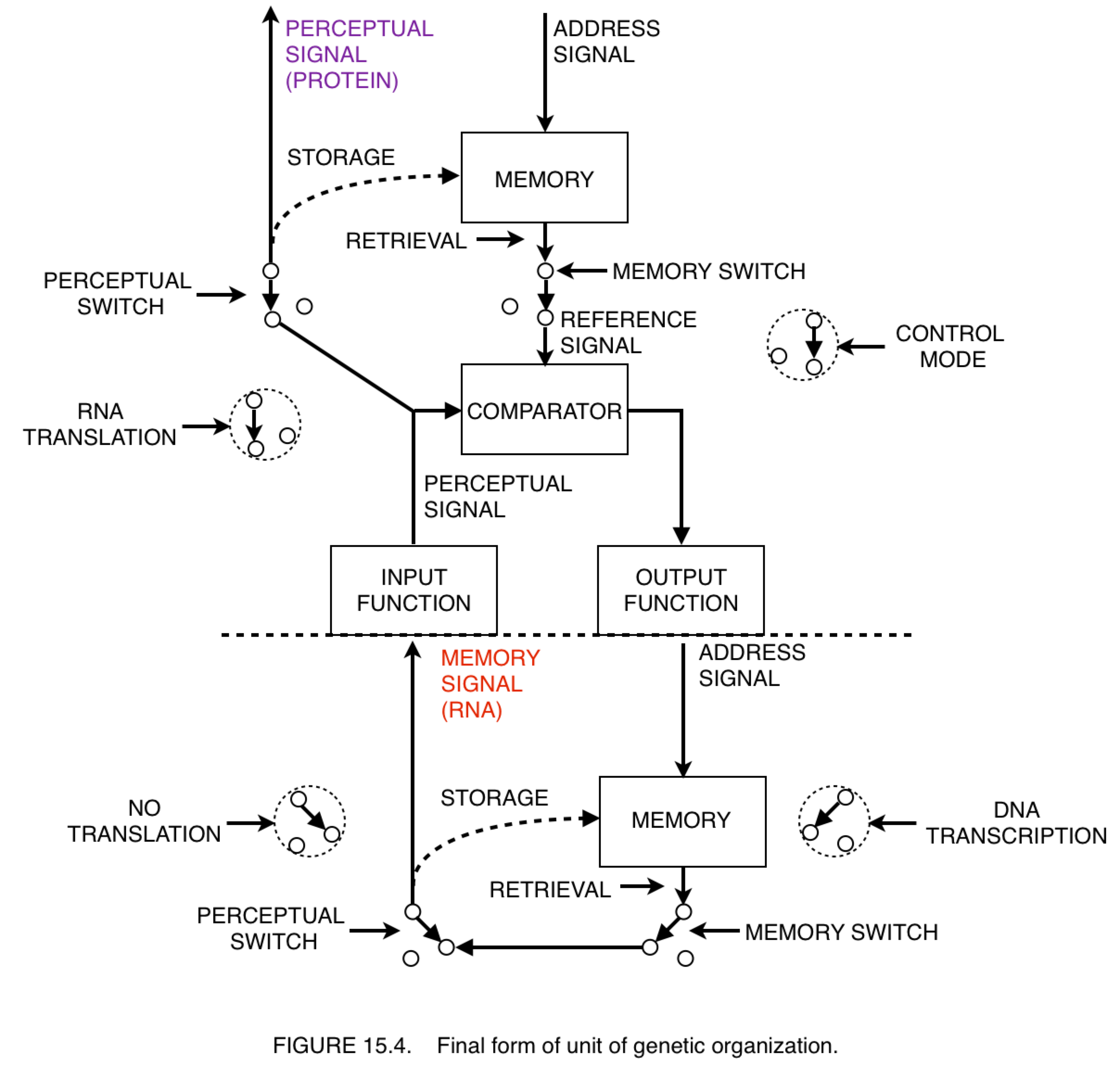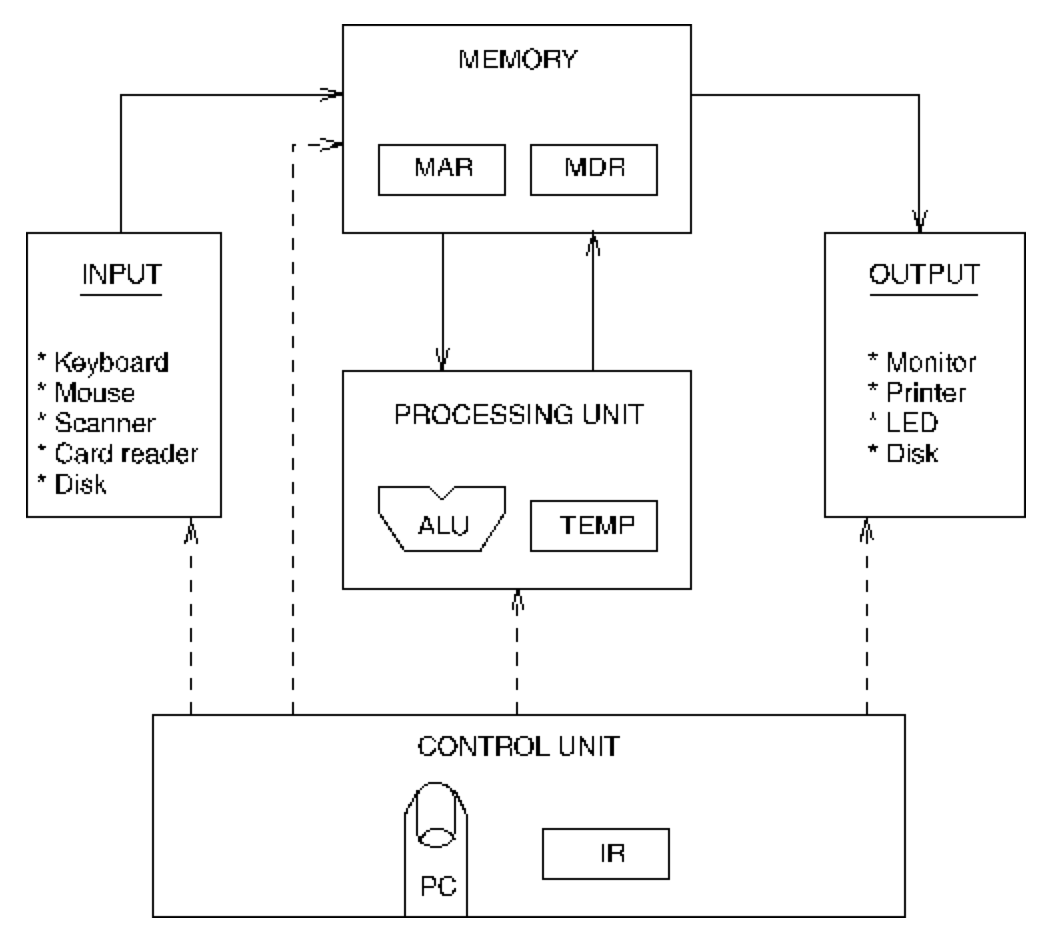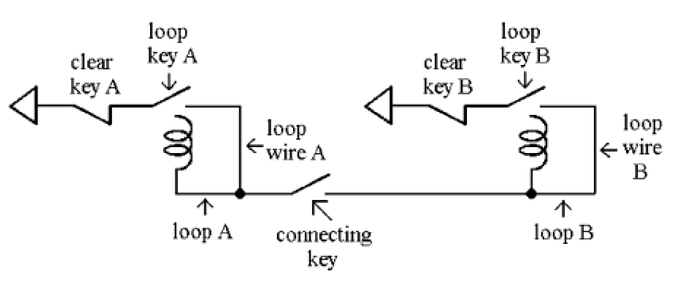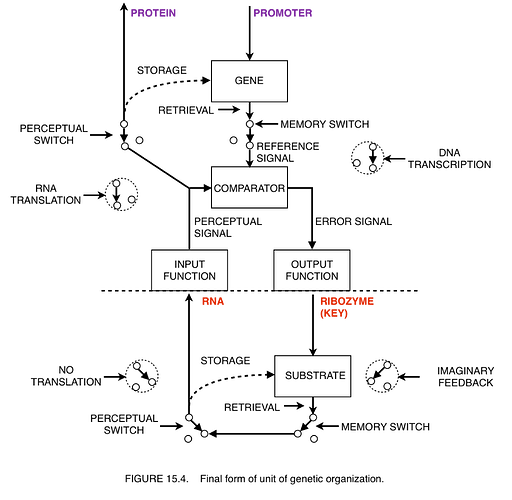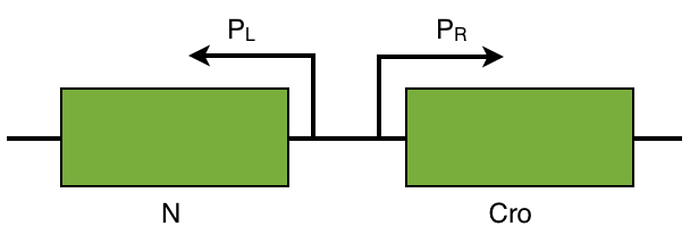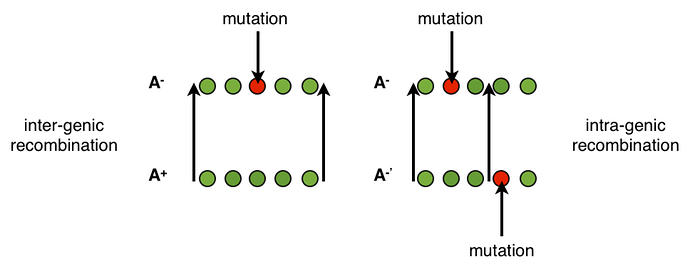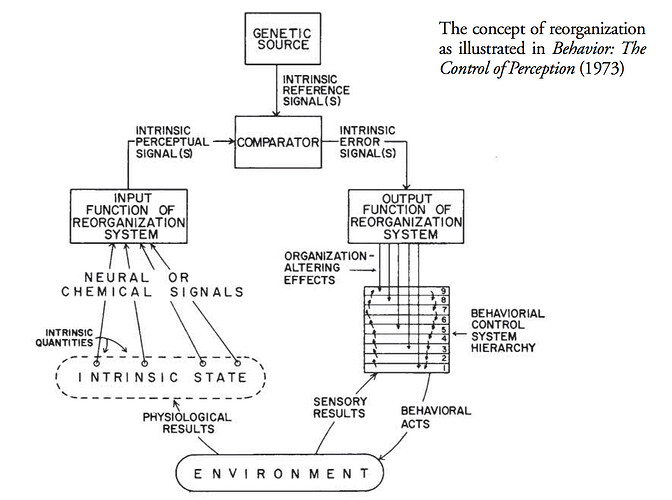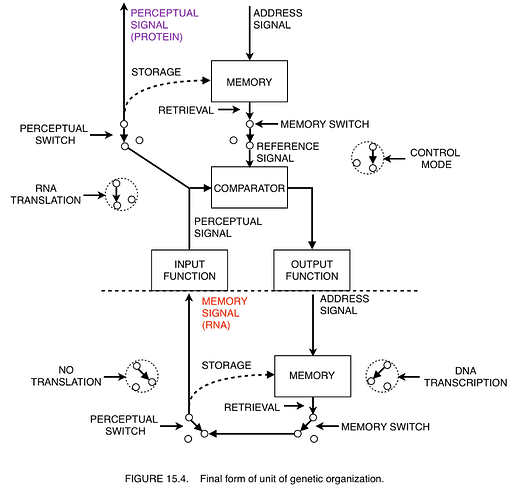[Angus Jenkinson, 2017-09-26.15.26]
Martin,
Apologies for a delayed and long response
Thank you for these remarks and the explanation of your position. Allow me to make a few general comments as my prime responses with a few additional then against your comments
C-Causation
I did a search on CSGNet in order to find occurrences of the term “circular causationâ€?. It had been used in an email that I responded to. What I found is that every occurrence – and there werre only nine – was one that I was involved in, apart from the originnal. I was questioning its use in one post. And yet it seems to be a fundamental concept for many people in CSG. So I think this could be a question that should be taken up separately?
BTW it is not my term and my point is that I have reservations about the idea as I understand it. In any case, we/I might want to look at some different language. For example, you use the term “control loopâ€?. Of course, in cybernetics it would also be feedback – also in various other system sciences. What these mean iin terms of “causationâ€? might be quite different from what “circular causationâ€? might be intended to mean.
So what? I have got two interests in this.Â
One of them is the use of language that would be relevant for practitioners, such as management and policy makers. While they are happy to talk about the cause of a problem, or even the root cause of a problem (there being no such thing for various reasons, including the regression you allude to in your post), they are unlikely to want to talk about the circular causation of a problem So that is the rhetorical problem that bars progress in my domains.Â
The other problem is the epistemological one.
The epistemological problems the question of whether classical causation in either linear or so-called circular modes is actually relevant to understanding human behaviour. Now some will immediately say that classical theory cannot apply to circular causation, feedback loops, or any other terminology. True. But if what meant is a deterministic model in which events from the past bring about the next event, causally, and using only the effective cause mechanism, albeit looped, then I think this remains in essence a classical model, albeit with a loop function.Â
→ vs →o
The classical model was created, in part, with the deliberate intent of screening out the possibility of teleology. This is an historical record. (See Toulmin, Cosmopolis) The rationale for this was not so much physical proof of its inappropriateness, nor a scientific proof of its inaccuracy (although some like Galileo were psychologically disposed towards looking for a material-mechanical explanation), but rather that it seemed hopelessly tied up with a set of beliefs that were killing millions of Europeans in wars. So, teleology became verboten despite its significance over the previous 2000 years. Well, sometimes it is important to think anew. But what cybernetics (amongst others) discovered was the necessity to bring back some form of teleology. But it was desperately important to make this acceptable just at a time when peer group reviews were being developed and the American defence force was allocating huge budgets to research. Besides, it was both a massive epistemological leap and a career-threatening one, to reject everything that people had been taught, which remains the case today. As a result, the idea of circular causation was created. But if the white ball hits the red ball which hits the green ball which in turn hits the white ball, this is still just causation, classically understood.
So in considering the various points that you make below, the way I read it is to differentiate between all those phenomena to do with the material world and its interactions where a classical causality might provide a sufficient explanation, and the rest. If a cup falls from a hand then under certain mechanical conditions it will break. If the hand ceases to hold a cup with a suitable balance of forces, then the mechanical conditions will bring about the falling of the cup. But how and why a person adjusts their hand is different.Â
This is my fundamental hypothesis, let us call it, and also what I take to be a fundamental breakthrough of perceptual control theory.
Societal relevance
Building on this hypothesis, I also want to comment on those aspects that are of most direct relevance to my own work. I think that PCT has so many different ramifications that it would be hard for any one person to understand them all in detail while it is probably useful for everyone to get a sense of the implications in all directions.
PCT is brilliant at providing all kinds of explanations of how people/animals anatomically behave specifically as a result of their control processes. These are v. useful in all kinds of modelling of problems and subsequent explanation. I do not want to invalidate any of that. But insofar as PCT also demonstrates that there is a root problem in the explanation of human behaviour (because the “causal modelâ€? that is being used is inadequate to deal with the phenomenal realities), that leads to a possible breakthrough in social science with ramifications in every field.Â
I find it very important that people are working out what might be involved in the flexing of the foot but it is of secondary interest (to me) to the question of resolving conflicts between social groups (say, since Kent sent me something on this), except insofar as there may be analogic learning. But the fact that people are acting in such a way as to cancel out what they perceive to be an interference or disturbance in what they are controlling for is of immense importance. This is an action that is intentional, purposeful and the morror, one might say, of classical causality. There are outcomes they wish to bring about and when they perceive that something is disturbing they act in such a way as to counteract these.
How I respond to PCT
If anyone introduced something like Maxwell’s Demon as a long history of past causal relations, like force interactions, that are said to chain back to the initial cause that then inexorably leads forward to this purposeful action, I would respond by saying that this missed the essence of PCT. I think it is PCT all the way down and all the way back. (Having said that, I do think that there is an argument that is worth discussing whereby the higher-order organisation of a human can convincingly be said to be of a different order from all other animal forms. But perhaps we should leave this possibly contentious subject to one side for now.)
If I am walking along a pavement and there is some messy object I will walk around it. It does not cause that, and how it got there is of secondary if any relevance to the situation. I am simply continuing what I am doing, nothing has changed. I am also maintaining my balance, with every step involving a process of losing and regaining it; so walking round something messy is the same kind of process whereby I control my actions to achieve my outcomes, with my various sensory fields being the means whereby I am able to know what is going on, or think I do. I act intentionally in the process of scanning my world not passively and I felt what does not seem to be relevant and pay attention to what does. That is why I am with Alex G-M in proposing the necessity to have a new look at the original Aristotelian model of causality. Having said that I think we need to look freshly and also look at language anew to reach practitioners.
Emergence
The emergent property of a feedback loop is entirely derivable from the properties of its components… ?? What unpreedictability? What is missing from the standard explanation of the emergent property?
You ask about emergence. One question is, what is it? And another is, what is the underlying epistemology according to the answer given? I have a general aversion to the term because of the implied assumptions within the term but I fully accept that there may be people who use it to mean something utterly different from its implications and from how it arose. My initial response follows from my earlier discussion of causality, but let me try to go into this a little bit more.
Let me assume that we agree that there are phenomenal differences between different types or orders of existence and consciousness that have given rise to the concept of emergence. The argument is not therefore whether birds are alive in a way that stones are not. But it is a principle of reductionism to try to explain higher-order phenomena in terms of interactions of lower order phenomena. On that basis, it would be considered desirable to reduce sociology to psychology, psychology to biology, biology to physics. In this context, which has been of significant epistemological influence in the science of the few centuries, the name emergence implies the emerging out of a complexity of interactions at a lower order of a new higher order of phenomenon, such as life or consciousness. Some people then say that the whole is greater than the sum of the parts. Others disagree. Along comes complexity theory, which proposes that there are simple patterns of lower order interaction between identities that with sufficient scale produce the surprising results of higher-order existences. And all of this is (not untypically) based on a reductionist version of classical causal explanation, and the added ingredient of “we do not yet know exactly what goes on but we probably will soon with big enough computers�. I have been hearing such explanations all my life.
To return to your question: The emergent property of a feedback loop is entirely derivable from the properties of its components… The question I am interested in is something like the process of producing the thought that will be embedded in this sentence.  According to what you say, I assume you mean that the ability to be able to think through a thought and express it as an articulated whole in suitable language would be an emergent property that would be entirely derivable from the properties of its components. Its components being a whole plethora of different activities not only within the brain cells but within the organism of my body involving a variety of different subsystems. That would be true even leaving aside such mechanics as typing.Â
-
So far as I know, human civilisation is some way from being able to describe in sufficient detail all of the properties of the components.
-
I have absolutely no problem in principle with the idea that the “emergent property� would be entirely derivable from its “components�, although I would worry about the assumptions that some might bring to what a component is. I do not think that the whole is greater than the sum of its parts.
-
The first problem that I have therefore is to do with the assumptions tied up with defining or understanding components. This has something to do with the next point that you ask about, to do with information and medium, which I will return to.
-
And the second problem is that the components would include the relationships between, including iterations of recursive relationships. And how we understand those relationships would be crucial to this, which brings us back to causality, amongst other things. Moreover it is certain that this would not be “a loop�, unless that means a loop of loops of loops.
-
And I am confident that by the time that we really understand us, we will not be building this all from bottom-up and we will not be using the contemporary epistemology.
Information, and imparity
And then I rather elusively referred to information in relationship to media. That I meant that there is information contained in the type of the word type, but also that the form of a crystal is information, that indeed every atomic structure, as order, is its own information. It is part of several systems theories to concern itself with information, as such, independent of any medium in which it might be present. Ashby discusses this.  Going further, there is the idea that order is merely information and that everything that “appearsâ€? in the natural universe is nothing but the formation – oor in-formation – of energy. I am assuming you are familiar wiith all this, and that is what I was referring to. Hence my statement (of a common view): “…the transformation that takes place bbetween energy and order is a function of information and since media are nothing but order there is no need to describe the system in any other terms other than information.â€?
And then I briefly referenced imparity with the assumption that you might be aware of it. Apologies. This is the theory that was developed by JD Stewart who compellingly argues that it is impossible to explain, at least, organic behaviour from information alone. Stewart was/is of course fully familiar with PCT. He therefore proposes a third domain alongside energy and information, which he calls imparity. Briefly, imparity represents the difference in information in terms of its preference. One of the operant functions for this is obviously, whether in neuroscientific or sentimental terms, the emotional systems of the body. I would propose that some systems, such as of Maturana and Varela, who posit closure as a fundamental aspect of the identity of the organic system, require a ‘mechanism’ for this closure and that imparity is an important element of this.
I suspect, perhaps wrongly, that it is not taken into account in PCT, at least as generally found, although I have the impression that there are some who do. When it comes to the process whereby [a person] modifies their behaviour in order to maintain a ‘desired’ (controlled for) perceptual outcome, there will frequently be choices between options for how to do so as well as choices as to whether to suspend the current purpose (controlled for) while stopping for an ice cream. I think the concept of imparity in explaining this may be helpful.
There are one or two other comments below, but have responded in this form to try and explain more sensibly some of the position from which I was originally responding. I am once again grateful to the trouble you have taken and hope that my response is more interesting than irritating.
Very best wishes, and for a good weekend.
Angus
[Martin Taylor 2016.06.17.15,43]
[Angus Jenkinson, 2016-06-17.18.43 UK]
Ah, interesting. Thank you for your point of view. And thank you very much for responding.
It’s nice to have a novel topic introduced into CSGnet, especially one from which I might learn something, whether it be about PCT or about the way others see PCT.
On almost every fundamental point, however and sadly, I am at least orthogonal to you in. Indeed for me what is most exciting about PCT is its absolute negation of causality as classically understood.
I think I see where you are coming from, but I fundamentally disagree. Let’s see whether we can come to any resolution by further analysis.
Nor am I simply substituting a quantum alternative. I am saying that the genuine implication of PCT is an entirely new epistemology as well as paradigm. It represents (in relevant fields) the cancelling of causality to the extent that causality exists in the first place (and its disavowal goes back to Hume). Some wonderfully practical and powerful consequences follow. (Subject for another time.)
Now I am not making this is a simple rhetorical statement: I am suggesting it is a compelling conclusion of a close open observation of the actual phenomenon. Is it not the case that the action that is taken in the process of controlling for a specific outcome is ‘intended to’ cancel (and routinely does) the effect of perturbation from any causal agent or factor outside the actor? It is the negative of causality.
“Intended to cancel the effects of disturbance on the controlled quantity (the perception)”, yes. Successfully doing so, no. There’s always some remanent influence of the disturbance on the perception in any physically realizable control system.
PROBABLY SO
You limit your consideration to the causal effect of the current disturbance on the current value of the perception, as though causality were independent of context in time and space, whereas I concentrated on the causal influences around the loop, ignoring the causal influences of the disturbance and the reference.
NO, BEHAVIOUR IS ALL ABOUT CONTEXT, BUT WHAT IS “CAUSAL�? YOU DISCUSS THE VERY QUESTION
It is very rare that one can say “A causes B” without specifying something about the histories of A and B and the surrounding circumstances. I drop a wine glass on a tile floor. Many would say that I caused the wine glass to break. But would my dropping it have been followed by a break if there had happened to be a foam pad on the floor? No. The cause of the breakage was a combination of my dropping it and the floor being hard. But hold on. If I had been in a lower gravity environment, would the glass have broken? Not if the gravity were low enough. So the cause of the breakage was my dropping it, the floor being tile, and the acceleration due to gravity being high enough. And so on. If I had dropped it from a sufficiently low starting point, it would not have broken. But in all this, the dynamic variable is the drop itself, so people probably would say that the drop, and by extension I, caused the glass to break.
But suppose I had been pouring wine into the glass and been severely startled while doing it, say by a car driving through my dining room wall. Maybe people would say that the car that caused the startle caused me to drop the glass, and therefore the cause was the car. But the car drove through the wall because the driver had a heart attack, so the cause was the heart attack…
SO CAUSES ARE RATHER HYPETHETICAL AS HUME AND OTHERS HAVE SAID EXCEPT IN V SIMPLE CONTROLLED PHYSICS ENVIRONMENTS
Now consider this rather ridiculous example when thinking of the cause(s) of the current value of the controlled perception. Forget about the physical manifestation of the controlled system, and consider only the functional diagram. In that diagram, there are two “causes” of variation in the perceptual value, the disturbance and the output. To say that neither by itself would result in the perceptual value observed is not to say that neither causes the perception to take on that value; it is to say that each causes that value only in the context of the other having the value it does.
In a control loop, there is another independent input, the reference value. Does it cause the perceptual signal to take on the value it has? The same arguments apply, but now we have to include in the context the properties of the output function, and in any functioning control loop, the output function depends not only on the present value of the difference between perception and reference, but on some previous history of that difference. In many simulations, the output function is a leaky integrator, and such a function produces output that depends on the entire previous history of its input. That whole history is part of the cause of the current value of the perception, along with the current value of the reference signal and the current value of the disturbance signal. That the history alone, the disturbance alone, or the reference alone do not cause a particular value of the perceptual signal individually by no means suggests that they are not causally related to it.
EXCEPT THAT THIS IS IN DANGER OF INTRODUCING CLASSICAL PHYSICS UNLESS YOU CAN OFFER A WAY OUT? THE “WHOLE HISTORY� IS IN WHAT WAY A “CAUSE� and HOW TO AVOID AN ABSTRACTION BEING REIFIED?
There are various other aspects of your description that are also most interesting, such as emergent phenomenon and causal loop.
By describing something as an emergent phenomenon, it states that there are various phenomena that when observed individually (and so described) do not appear to have the appearance that they do when they appear to be a single phenomenon and that what happens between the one observed (and so described) appearance and the other is a mystery dressed up as a scientific concept.
Not so. The emergent property of a feedback loop is entirely derivable from the properties of its components and the way they are connected with each other. There’s no mystery about it at all. It is predictable in the finest detail, or at least as fine as the precision with which the components and structure are defined. The only exception to this is if the loop behaviour is chaotic, in which case an infinitesimal imprecision of the initial conditions can (but need not) lead to an exponentially increasing imprecision of future values. Control loops are not ordinarily chaotic, so far as I am aware!
INCLUDING THE “WHOLE HISTORY�?
SERIOUSLY, I THINK YOU ARE DEALING WITH A KEY POINT
.
This represents for me an abdication of explanation, and indeed a presumed unpredictability is commonly built into such descriptions.
?? What unpredictability? What is missing from the standard explanation of the emergent property?
SEE ABOVE
Moreover, when discussing a causal loop, the operant paradigm is cybernetics: PCT was developed out of cybernetics. Cybernetics in its classical (first or second order) form only deals with information, it is media neutral, indeed there is no such thing as medium, nor energy, from the point of view of cybernetics (it is not saying that there is no such thing as energy, it saying that the transformation that takes place between energy and order is a function of information and since media are nothing but order there is no need to describe the system in any other terms other than information).
Maybe you mean something more precise than the thermodynamics of non-equilibrium systems, but “media are nothing but order” loses me. What a control system does is thermodynamically the same as a refrigerator. It exports the entropy from its controlled variable into the rest of the universe, using the energy flow from a source (biologically, food) to a sink (biologically excreta) to do so.
At its next level, really understood, level of incarnation, cybernetics adds the third function or operant factor, imparity,
I don’t know what you mean by “imparity”, which ought to mean “difference” or “unevenness” but apparently means something else.
SEE STEWART AND TERNARY CYBERNETICS
and this does have some significance from the point of view of PCT, since it is precisely the case that in controlling for a particular outcome alternative information has imparity, but notwithstanding this imparity does not affect the basic point I want to make. What is being described as a causal loop is in this case an information loop and information is not causal in terms of Newtonian force dynamics.
I don’t know what you mean by saying “information is not causal in terms of Newtonian dynamics”. They seem unrelated. Information analysis takes no account of causality, in the same way that any other process derived from arithmetic does not. A = B+C does not mean B and C together cause A, nor does B = A-C mean A and C cause B. The same is true of conditional and contingent uncertainties and the uncertainty reduction about B consequent on observing A (the information B provides about A). But I do agree that the control loop is an information loop; the causality is in the loop structure, but its information analysis doesn’t have to be concerned with that except insofar as no values or probability distributions can be affected by their prior values more recent than one loop transport lag.
It works through agent/patient dynamics and the agent/patient dynamics as described by PCT are such, as previously described, as to cancel out the informational effect of any perturbation from the controlled-for condition, which is information itself.
No doubt this could be described more precisely or elegantly, perhaps even more accurately, but I only intend to try and give an impression of why, although I appreciate that it is quite obvious that you know a great deal of physics in various areas that would appear to exceed my own, the issue of our difference is at least in part fundamentally epistemological in our interpretation and understanding of perceptual control theory and its underlying paradigm of cybernetics.
Maybe. Maybe not. With luck, we shall determine whether that is so.
My extraordinary excitement in discovering PCT is precisely that it gives an exact scientific explanation with a momentous effect at least exceeding that of Newton or Einstein or the quantum physicists and once rightly understood will transform centuries of future science.
At least we agree on that!
Have a good weekend
You too,
Martin
···
On 17/06/2016, 21:45, “Martin Taylor” mmt-csg@mmtaylor.net wrote:




